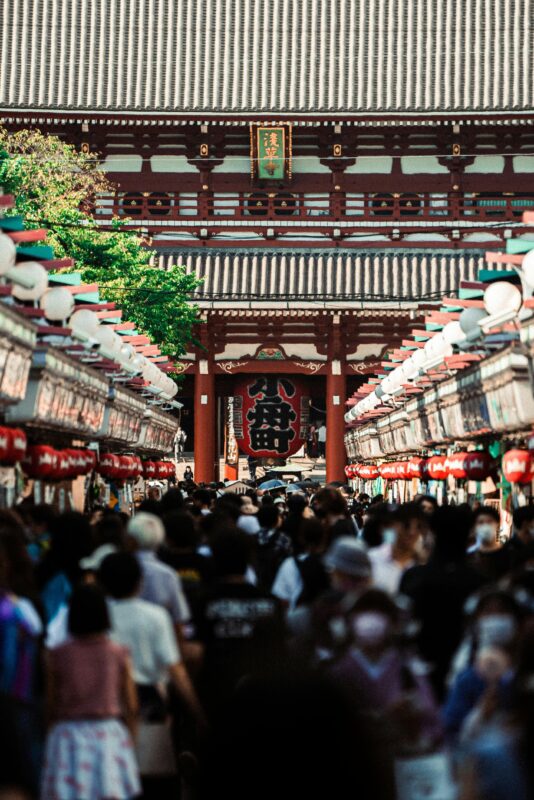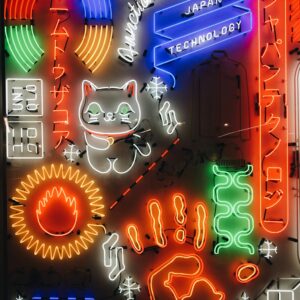Japan Art and Architecture Itinerary: Museums, Galleries, and Landmarks
Table of Contents
- Day 1: Tokyo Arrival – Ueno and Roppongi Art Districts
- Day 2: Asakusa and Sumida – Traditional Meets Modern
- Days 3-4: Kanazawa – Art Museums and Edo-Period Gardens
- Day 5: Kyoto – A Walk Through Japan’s Architectural Heritage
- Days 6-7: Naoshima Art Island – A Fusion of Art and Landscape
- Conclusion
- Looking for a tour agency to help with your planning?
Welcome to an immersive journey through Japan’s art and architecture! This itinerary is designed for those who crave a deeper look at the country’s artistic legacy and architectural marvels. Over seven days, you’ll explore everything from traditional temples and beautifully landscaped gardens to modern museums and visionary art installations. Let’s embark on a cultural adventure you won’t forget!
Day 1: Tokyo Arrival – Ueno and Roppongi Art Districts

Tokyo greets you with a fascinating mix of ancient charm and futuristic vibes. Today’s agenda dives into two standout art districts: Ueno and Roppongi.
Morning: Tokyo National Museum, Ueno
Start your day at the Tokyo National Museum, Japan’s oldest and most extensive museum, boasting a jaw-dropping collection that spans millennia. From samurai armor and intricate Noh masks to delicate calligraphy and pottery, it’s a deep dive into Japan’s cultural roots.
Pro Tip: Ueno Park, just outside the museum, turns into a fairytale wonderland during cherry blossom season. It’s not just about the blooms—local musicians and food stalls bring a festival vibe to the park that’s hard to beat.
Afternoon: Mori Art Museum, Roppongi Hills
Next, head to the Mori Art Museum in Roppongi, perched high above the city on the 53rd floor of Mori Tower. Known for cutting-edge exhibitions, the Mori Art Museum showcases contemporary works from both Japanese and international artists. Don’t miss the “Tokyo City View” observation deck for a stunning panorama of Tokyo that’s especially captivating at sunset.
Local Insight: The rotating exhibitions here have featured big names like Yayoi Kusama and Takashi Murakami, making it a hotspot for lovers of modern art.
Interested in a high-end experience in Japan? Explore our luxury Japan itinerary for exclusive stays and premium activities.
Day 2: Asakusa and Sumida – Traditional Meets Modern

Get ready for a day of contrasts as you explore the historical heart of Tokyo alongside its modern architectural icons.
Morning: Senso-ji Temple and Asakusa District
Step into Asakusa’s Senso-ji, Tokyo’s oldest temple and one of its most revered. Dating back to 645 AD, this temple is steeped in legend. The story goes that two fishermen discovered a statue of Kannon, the goddess of mercy, in the Sumida River, and ever since, Senso-ji has been a place of worship. Explore the bustling Nakamise-dori, a shopping street packed with Edo-era crafts, snacks, and souvenirs.
Afternoon: Tokyo Skytree, Sumida
Cross the river to Tokyo Skytree, an engineering feat that towers 634 meters above Tokyo. Its design draws inspiration from traditional Japanese pagodas, combining them with modern resilience to withstand earthquakes—how’s that for tradition meeting innovation?
Best Time to Visit: Late afternoon for sunset views over Mount Fuji, followed by a sparkling cityscape as Tokyo lights up for the night.
Days 3-4: Kanazawa – Art Museums and Edo-Period Gardens

Take a shinkansen (bullet train) to Kanazawa, where samurai heritage and contemporary art come together seamlessly.
Day 3: 21st Century Museum of Contemporary Art
Arriving in Kanazawa, your first stop is the 21st Century Museum of Contemporary Art, a circular, glass-walled gem known for its immersive installations. Don’t miss Leandro Erlich’s “Swimming Pool”—you can actually walk underneath it and see people “floating” above!
Pro Tip: It’s a popular spot, especially on weekends. Grab tickets in advance, and be sure to explore the surrounding outdoor exhibits.
Day 4: Kenrokuen Garden and Kanazawa Castle
Today, explore Kenrokuen Garden, considered one of Japan’s top three landscape gardens. Its name means “garden of six attributes” (spaciousness, seclusion, artifice, antiquity, watercourses, and panoramas), and it certainly lives up to all six. Just a short walk away is Kanazawa Castle, a stunning example of Edo-period fortifications, complete with intricate wooden gates and stone walls.
Local Insight: If you’re lucky, you might spot gardeners delicately tending to each plant—a job that takes skill, precision, and an eye for aesthetics passed down through generations.
Looking to explore Japan’s natural beauty? Our Japan itinerary for nature lovers covers stunning parks, mountains, and lakes.
Day 5: Kyoto – A Walk Through Japan’s Architectural Heritage

Kyoto is a city that feels like stepping into a history book. Today’s highlights include two of Japan’s most iconic sites.
Morning: Kinkaku-ji (Golden Pavilion)
Visit Kinkaku-ji, the dazzling Golden Pavilion, covered in gold leaf that reflects beautifully off the surrounding pond. It’s one of Japan’s most photographed landmarks, and there’s a reason for that—the sight of the pavilion, especially with seasonal colors or snow, is pure magic.
Interesting Fact: The original temple dates back to the 14th century, though it’s been reconstructed after a fire. Each layer of the pavilion has a different architectural style, representing a harmony of Zen, warrior, and aristocratic traditions.
Afternoon: Fushimi Inari Shrine
Discover Fushimi Inari Shrine, famous for its seemingly endless rows of red torii gates. These gates create a tunnel that winds up Mount Inari and are donated by worshippers, each inscribed with the name of the donor—a testament to the community spirit and deep-rooted reverence of the Japanese people.
Best Time to Visit: Early morning to avoid crowds and experience the serene atmosphere as you walk through the gates.
Fascinated by Japan’s history? Our Japan itinerary for history enthusiasts highlights castles, ancient temples, and other heritage sites.
Days 6-7: Naoshima Art Island – A Fusion of Art and Landscape
Your final destination is Naoshima, an island where contemporary art blends seamlessly with natural beauty.
Day 6: Benesse House and Chichu Art Museum
Stay at Benesse House, a museum-hotel hybrid, where you can literally sleep surrounded by art. The Chichu Art Museum, designed by Tadao Ando, takes you underground, yet fills the spaces with natural light. Works by Claude Monet, Walter De Maria, and James Turrell are all beautifully integrated with the minimalistic design.
Local Insight: Chichu’s design respects the island’s natural surroundings, using sunlight to illuminate Monet’s “Water Lilies” in a way that feels almost otherworldly.
Day 7: Art House Project
Complete your journey by exploring the Art House Project, where old, traditional houses have been transformed into contemporary art installations. Each piece pays homage to Naoshima’s local history, creating a unique cultural dialogue between past and present.
Pro Tip: Be sure to visit the Go’o Shrine, where an underground glass staircase connects the shrine to the earth—a beautiful fusion of Shinto tradition and modern art.
Want a bit more time to explore Japan’s top spots? Our 10-day Japan itinerary offers a well-rounded introduction to the country’s best destinations.
Conclusion
And there you have it—a week immersed in the very best of Japan’s art and architecture! From Tokyo’s skyline to Kyoto’s temples and Naoshima’s transformative installations, every stop on this journey offers a new perspective on Japan’s artistic soul.
Looking for other inspirations on what to do? Explore our Japan Travel Itineraries: Comprehensive Guides for Every Traveler to find travel plans for any schedule or style, from quick highlights to in-depth explorations.
Ready to see these wonders up close? Book your tour with Firefly Japan, and let us guide you through this unforgettable artistic adventure!
Looking for a tour agency to help with your planning?
Contact Firefly Japan to book a private luxury tour in Tokyo & Kanto


